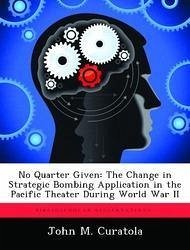
Canopies of Blue
The American Airborne Experience in the Pacific in the Second World War as a Case Study in Operational Art and Multi-R
Versandkostenfrei!
Versandfertig in über 4 Wochen
15,99 €
inkl. MwSt.

PAYBACK Punkte
8 °P sammeln!
As America's collective memory of the Second World War fades, popular history books and the entertainment industry have filled the knowledge gap with accounts from the European Theater. A resurgence in works focusing on the war in the Pacific has surfaced in recent years, but the topic still requires a fresh perspective. In particular, the American airborne experience in the Pacific presents a field ripe for exploration. This historical monograph argues that a careful review of the operations involving the 11th Airborne Division, the 503rd Parachute Infantry Regiment, and the 1st Marine Parach...
As America's collective memory of the Second World War fades, popular history books and the entertainment industry have filled the knowledge gap with accounts from the European Theater. A resurgence in works focusing on the war in the Pacific has surfaced in recent years, but the topic still requires a fresh perspective. In particular, the American airborne experience in the Pacific presents a field ripe for exploration. This historical monograph argues that a careful review of the operations involving the 11th Airborne Division, the 503rd Parachute Infantry Regiment, and the 1st Marine Parachute Battalion reveals a measure of foresight on the part of those who designed campaign plans in the Pacific. General Joseph Swing's implementation of the para-glider concept in the 11th Airborne enabled his unit to perform a variety of tasks including amphibious operations, parachute drops, and POW camp raids. The Allies'; only independent parachute regiment in the Pacific, the 503rd, successfully employed the combined arms concept in its capture of Nadzab and set the conditions for the Allied reduction of Japanese defenses around Rabaul. The United States Marine Corps'; short-lived experiment with airborne forces revealed the usefulness of units in multi-role functions, but ultimately betrayed an inability to execute actual parachute drops because of logistical limitations in the ocean environment. Herein lies a promising heritage. While most Americans maintain a short historical memory, today's military strategists can draw on past successes rather than bemoan an alleged lack of operational skill. Despite the fact that many in today's military planning community consider American attempts to operationalize national strategy a dismal failure, the airborne experience in the Pacific Theater in World War II provides a positive example for a successful operational tradition. Furthermore, case studies of this nature may hold implications for future force structure in the U.S. Arm














